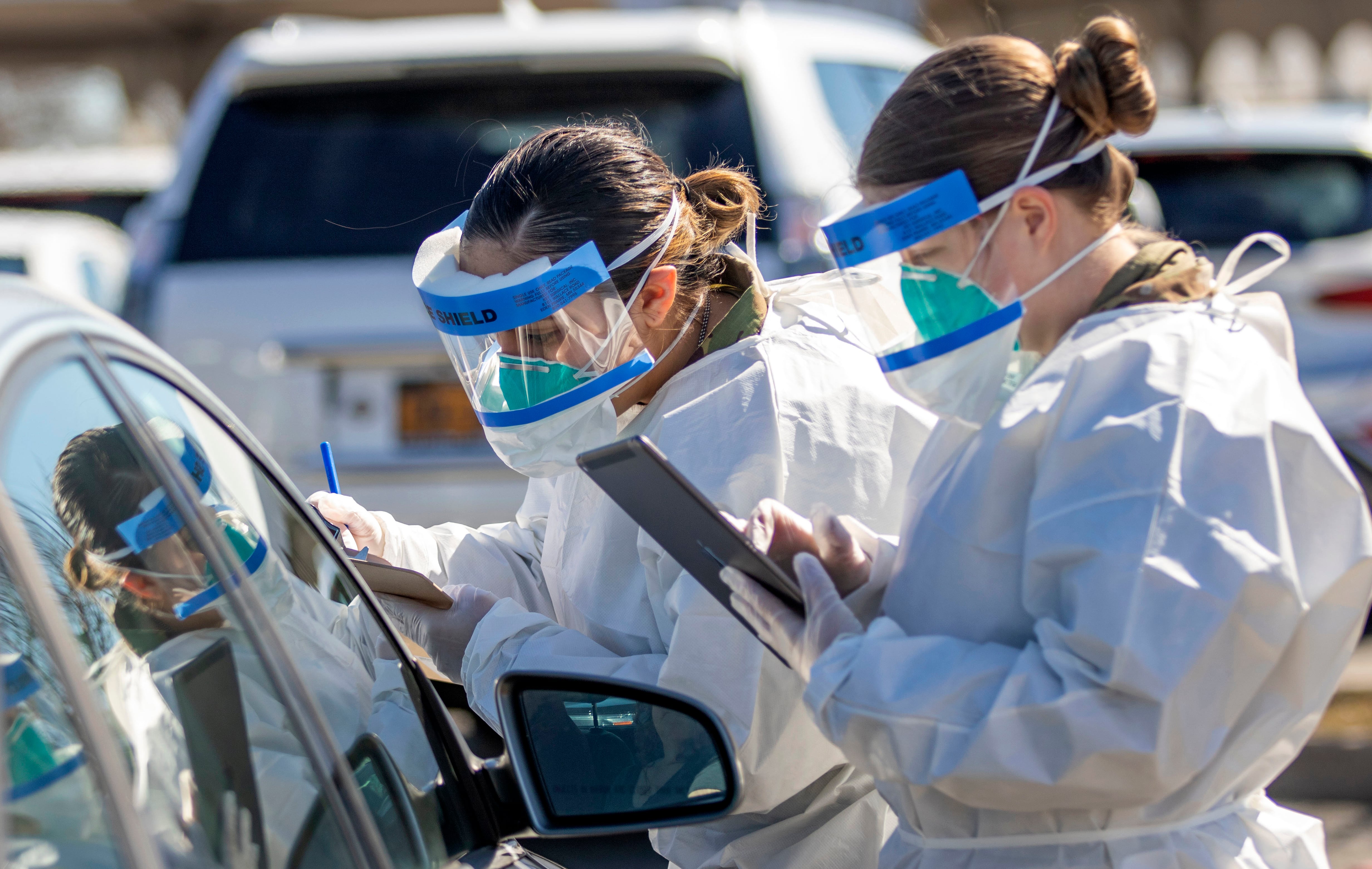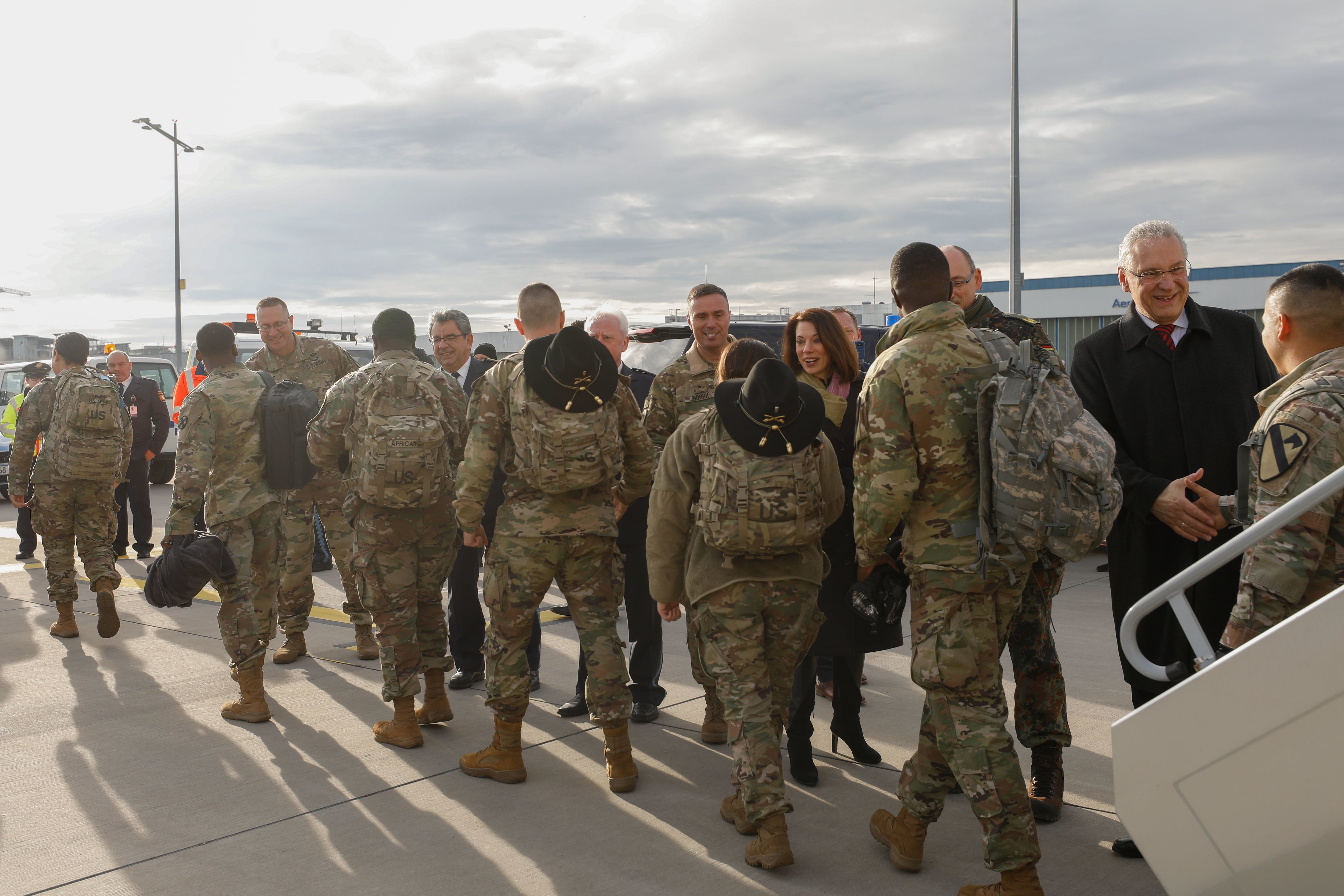WASHINGTON — The new coronavirus pandemic may have dampened the U.S. Army’s major division-level exercise in Europe, but the service’s chief told Defense News in a March 18 interview that important lessons have already been learned.
Defender Europe was slated to be the third-largest military exercise on the continent since the Cold War and was meant to test the Army’s ability to deliver a force from forts to ports in the United States and onward to ports in Europe, and from there to operational areas throughout Europe from Germany to Poland to the Baltic states and other Eastern European nations, Nordic countries and even Georgia.
The Army began to move troops and equipment into Europe beginning in January, with the meat of the exercise occurring in April and May this year.
But as COVID-19 has spread across the globe, with Europe designated as the newest epicenter of the virus, the Army decided last week that it would scale back Defender Europe, according to a statement from U.S. Army Europe.
“We have modified exercise Defender Europe 20 in size and scope,” a March 16 statement read. “As of March 13, all movement of personnel and equipment from the United States to Europe has ceased. The health, safety and readiness of our military, civilians and family members is our primary concern.”
The Army decided to cancel linked exercises that would have been a part of Defender Europe, which already happen on a regular basis in Europe, to include Dynamic Front, the Army Joint Warfighting Assessment, Saber Strike and Swift Response.
The service said it anticipates the armored brigade combat team already deployed to Europe will conduct gunnery and other combined training events with allies and partners as part of a modified exercise, and that forces already deployed to Europe for other “linked exercises” would come back to the U.S.
Also last week, U.S. Army Europe announced that its commander, Lt. Gen. Christopher Cavoli, and his staff were exposed to COVID-19 at a land force commanders conference in Wiesbaden, Germany, on March 6. Out of an abundance of caution, the service decided to quarantine those exposed. According to an Army spokesperson, the quarantine has no effect on operations, and the general and his staff continue to carry out duties from an isolated location.
Much was riding on Defender Europe when it comes to teaching the Army where it stands in terms of its ability to rapidly deploy a combat-credible force to Europe to support NATO and the U.S. National Defense Strategy. The exercise was also going to help the Army get more clarity on its Multi-Domain Operations concept as it morphs into official doctrine.

The service had also hoped to assess through the exercise whether its pre-positioned stock in Europe had the right equipment and was in the right place.
The Army made the difficult decision last week to reduce the size and scope of the exercise to “protect our troops,” Army Chief of Staff Gen. James McConville said.
The service had already deployed roughly 6,000 soldiers and 3,000 pieces of equipment from the U.S. beginning in January in support of the Defender Europe exercise, McConville said, and also deployed a brigade combat team and a division-sized headquarters.
The Army also has moved about 9,000 vehicles and pieces of equipment from Army pre-positioned stocks in Europe for the exercise, he noted.
“One of the big objectives of this exercise was what we call strategic readiness,” McConville said, “the ability to dynamically employ our forces from the United States, and we were able to demonstrate most of those capabilities. We were able to get our forces over there, we have a draw from the pre-positioned stocks and we’re still able to train with our allies and partners, although at much less capability.”
Those units that won’t be able to train through some of the linked exercises in Europe are already “tactically ready” and could maintain readiness through home station training, McConville added.
Lessons learned will directly feed into how the Army crafts its future doctrine and help validate that the service is ready to execute what is laid out in the National Defense Strategy.
But the other thing the Army has learned from the spread of COVID-19 and its effects on the exercise is that the service is agile, McConville stressed. “We had to adapt the plan, we were re-missioning some units during the actual deployments; some units may go other places, and that’s why this was a very good exercise for us,” he added.
For those deployed for the exercise, McConville said that the Army has put in place a rigorous screening process for troops returning home when the exercise is complete, where they will be screened for infection before coming back and then screened again upon return to installations and posts, then quarantined as necessary.
While the Army has exercised strategic readiness, testing the ability to move seamlessly from country to country throughout the modified exercise may not get a full shake due to how European countries may choose to handle the pandemic. Border crossing was a challenge in past years. For now, there are too many uncertainties to know whether border crossing and mobility across countries will pose a problem or a challenge for the Army, according to McConville.
“Italy was a little ahead of us” in coping with the spread of the virus,” McConville said, “but Europe is probably right along the same lines where we are right now, where leaders are taking a hard look at how they want to try to contain this.”
Meanwhile in the Pacific region, where COVID-19 originated and where many countries have been hard hit, the Army was able to complete a recent exercise — Cobra Gold in Thailand, McConville said. The service continues to conduct risk assessment for each upcoming exercise in the theater.
The Army is also likely to stick to its plan to focus more largely on a division-sized exercise in the Pacific in 2021 and hold a smaller version of Defender Europe, rather than ramp up the European exercise back up to the intended size for 2020, McConville said. But there are still many unknowns, he added, and the Army will continue to assess its options.
Jen Judson is an award-winning journalist covering land warfare for Defense News. She has also worked for Politico and Inside Defense. She holds a Master of Science degree in journalism from Boston University and a Bachelor of Arts degree from Kenyon College.





